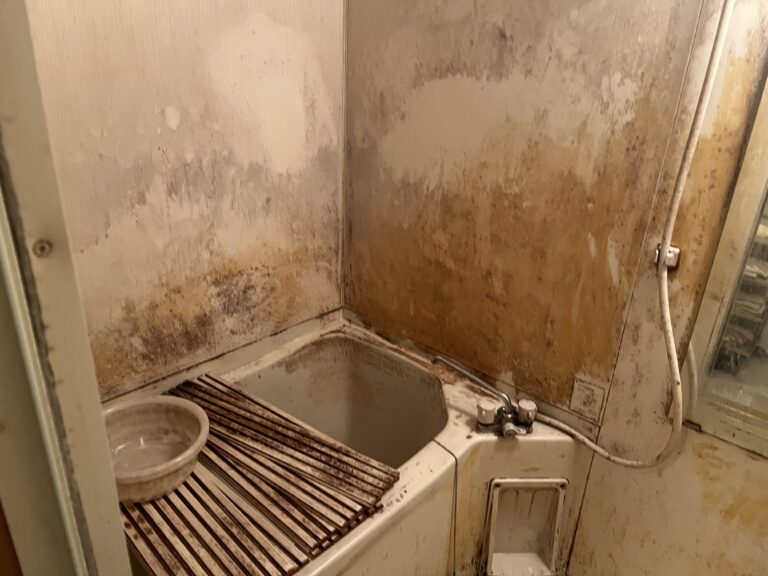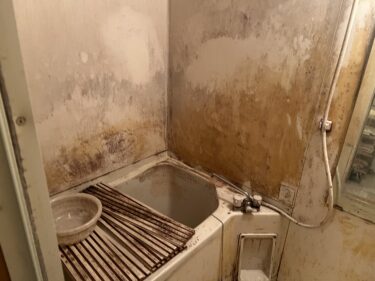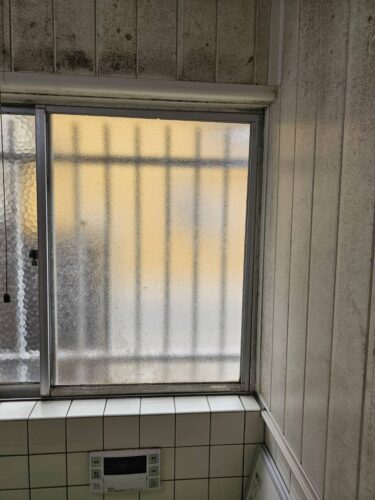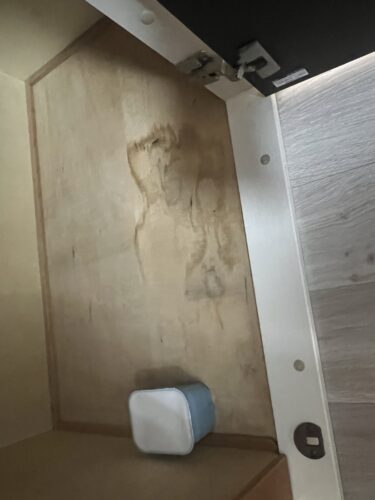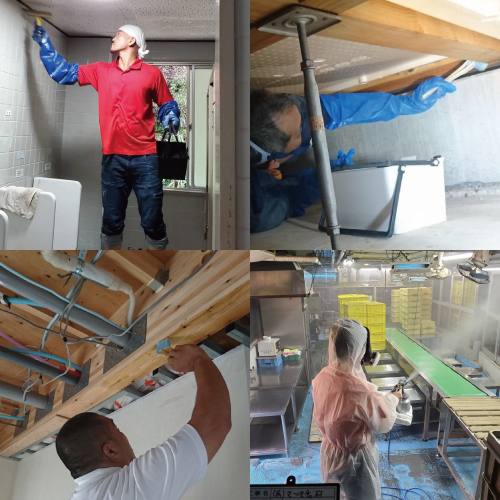The reality is that modern, highly insulated homes and vacation homes are prone to moisture and mold, even when used infrequently. For anxious owners, this article provides an easy-to-understand explanation of how to prevent mold and ensure a safe, long-term absence. By reading the article, you will learn about the best mold remedies for vacation homes and luxury residences, from basic moisture control to the cutting-edge MIST method, and you will learn concrete ways to maintain a comfortable environment even during your absence. This will give you the benefit of maintaining a safe and clean living environment while protecting the property value of your building.
1. Causes of mold in vacation homes and second homes
Because of their limited frequency of use, vacation homes and second homes provide an environment conducive to mold growth. In particular, they tend to be humid and difficult to clean and ventilate regularly, making them perfect breeding grounds for mold. This chapter explains the main causes of why mold tends to occur in these buildings.
1-1. High-humidity environment created by closed conditions
Villas and second homes are often unoccupied for long periods of time, and windows and doors tend to remain closed. This prevents indoor air circulation and leads to a buildup of humidity. Especially during rainy season and typhoon season, when the outdoor humidity is high, that humidity tends to enter the interior and saturate the interior. As a result, mold tends to form in places where air flow cannot reach, such as behind wallpaper, in closets, and behind furniture. If humidity remains above 60% for a long period of time, mold damage will spread throughout the entire room as spores become suspended in the air as well as visible mold.
1-2. Dust and dirt become a source of nutrients
Mold begins to grow not only because of humidity, but also because of the presence of nutritive substances. In particular, dust, hair, fiber scraps from clothing, and even minute fibers from wood and paper are favorite food sources for mold. When moisture is added to areas where these things tend to accumulate, the perfect growing environment for mold is completed. If not cleaned regularly, invisible dirt can gradually accumulate and become a breeding ground for mold before you know it. In particular, fabric products such as tatami mats, carpets, and sofas are very suitable for mold growth, and it is not uncommon for mold to spread inside even if it is not noticeable on the outside.
1-3. Influence of natural environments such as forests and seashores
One of the most popular locations for vacation homes are forested areas and seaside resort areas. However, these areas have high humidity in the air, and the nature can cause a lot of rain and fog. In these areas, even if the building is perfectly sealed, the outside air tends to make the interior constantly damp. In addition, the surrounding plants and soil may contain high levels of mold spores, and there is a risk that these spores may enter the room during ventilation. Maintaining a vacation home in such a natural environment requires more careful moisture control and cleaning than for an ordinary house.
2. Moisture Management in Vacant and Long-Term Absentee Homes
A common problem in vacant and long-term absentee homes is the tendency for moisture to accumulate and become a breeding ground for mold and mildew because of the long periods of unoccupied time. Here are some ways to take advantage of modern technology to properly manage moisture even when you are away.
2-1. Use of Automatic Ventilation and Solar Warmers
Automatic ventilation systems are increasingly being installed in modern homes. These systems detect moisture and air stagnation in a room and automatically ventilate the room at a certain time and humidity threshold. By installing such systems, fresh air always flows inside the room and moisture can be kept out, even when the occupants are away from home for long periods of time. In addition, “solar warmers” are attracting attention as an energy-saving measure. This is a device that uses sunlight to heat indoor air while exchanging it with the outside air, which not only reduces humidity but also has the advantage of being environmentally friendly since it does not require electricity. By installing these facilities, humidity can be safely controlled even in vacation homes and vacant houses.
2-2. Remote Humidity Control with Smart Air Conditioners
As the smart home trend continues, more and more air conditioners are becoming smart-compatible. This makes it possible to remotely turn on the air conditioner from a smartphone or tablet, or to use a humidity sensor to operate the dehumidifier. For example, by setting the air conditioner to automatically switch to dehumidification mode when the humidity exceeds 60%, the room can be kept in a mold-free environment at all times. Being able to check and manage the environment of a vacation home or vacant house in real time from a travel destination or from home is a great source of peace of mind. This remote moisture control is especially effective during periods of sudden high humidity, such as summer and the rainy season.
3. Mold Diagnosis and Inspection Methods for Long-Term and Luxury Homes
Luxury homes and extended-stay vacation homes often have expensive and delicate building and interior materials, and damage caused by mold can lead to a significant decrease in property value. Professional diagnosis is necessary to detect invisible mold and odor-causing fungi. This section details the actual mold diagnosis and testing methods.
3-1. Professional inspections such as moisture content and suspended fungi measurement
Most mold outbreaks are caused by “moisture” and the amount of moisture contained in building materials and inside walls is an important indicator. Professional inspections use a “moisture content measuring instrument” to check the moisture content of wood and wall materials. Usually, moisture content exceeding 20% increases the risk of mold, and measures are taken based on this.
In addition, it is also important to measure airborne mold bacteria. Air is sampled using special equipment, and the amount of mold spores and bacteria contained in it is quantified. Based on this data, it is possible to determine mold growth that may not be apparent from the outside and to accurately assess the indoor sanitary conditions.
Especially in high-end housing, non-destructive inspection methods are required to conduct inspections without damaging the exterior or finishes, and infrared cameras and heat sensors are sometimes used.
3-2. How to Select a Fungus (Mold) Inspection Company
When requesting a mold inspection, it is important to select a reliable company. Selection criteria include: (1) a strong inspection record, (2) adoption of inspection methods that comply with the standards of the Ministry of Health, Labor and Welfare, and (3) a detailed post-inspection report.
It is also important that the company not only inspects the mold, but also provides “recurrence prevention measures” and “mold remediation” for mold that has occurred. Recently, more and more companies are using environmentally friendly sanitizers and construction methods that are gentle to materials, and companies that employ proprietary technologies such as the “MIST method” are attracting particular attention.
Inspection fees vary depending on the scale of the building and the scope of the diagnosis, but are generally in the tens of thousands to hundreds of thousands of yen. Check the details at the estimate stage to confirm that necessary items are included and that the fee structure is clear.
Basics of Mold Prevention and Daily Management
No matter how high-performance the building materials and ventilation system are, mold can easily occur if daily management is not done properly. Especially in buildings that will not be used for a long period of time, awareness of prevention is extremely important. Here are some daily mold prevention techniques that anyone can practice.
4-1. Importance of Maintaining 40-60% Humidity
The humidity at which mold tends to grow is considered to be 60% or higher. Therefore, maintaining indoor humidity at 40-60% at all times is the basic principle of mold prevention. The first step in controlling humidity is to always have a hygrometer available. Install a hygrometer in the living room, bedroom, bathroom, etc., and keep track of trends by location.
In addition, using the dehumidification function of an air conditioner or a dedicated dehumidifier is also effective. In particular, it is advisable to install small dehumidifiers and desiccants in places where moisture tends to accumulate, such as bathrooms, closets, and entryways. In addition, on days when the weather is fine, regularly opening windows to change the air will help expel mold spores as well as humidity.
4-2. Daily cleaning and ventilation
Cleaning is the most basic and effective means of mold prevention. Dust, hair, food scraps, and other debris can be a source of nutrients for mold, so be sure to vacuum at least once a week and clean out unseen areas such as behind furniture once a month.
It is also important to regularly open the doors of closets and closets to allow air to pass through. It is also effective to place dehumidifying sheets or charcoal dehumidifiers in storage spaces where moisture tends to accumulate. Curtains and bedding should also be dried in the sun whenever possible to reduce the occurrence of mold.
5. when should a professional be hired?
However, if the mold has spread beyond a certain level, if the mold has penetrated deeply into the material, or if there are concerns about health effects, it is essential to have a professional take care of the mold. Here we will explain the key points to determine under what circumstances you should contact a professional. 5-1.
5-1. When mold is widespread or difficult to see
When mold is found in areas that are difficult to see, such as ceilings, behind walls, under floors, and air conditioning ducts, or when black spots are widespread, it is very dangerous to deal with the mold on one’s own. Especially if the mold has penetrated deep into the wallpaper or inside the wood, commercial sprays will not provide a fundamental solution.
In such cases, professionals use specialized equipment to measure the extent of mold growth inside building materials and perform the appropriate removal and sanitization work. The removal process even includes treatment of airborne bacteria in the space, preventing recurrence that cannot be prevented by superficial cleaning alone. Although the cost is higher than self-treatment, the peace of mind is overwhelmingly different in that the building and furniture are not damaged and measures are put in place to prevent recurrence.
5-2. Professional Diagnosis in Luxury Houses and Villas
In buildings such as luxury houses and villas where expensive materials are used for interior and finishing materials, treatments that damage the materials must be avoided. Accidental use of bleach or alcohol may remove the mold but discolor the walls and floors.
In such cases, the best treatment method for the material is to have a professional do the work. In particular, the “MIST Method®” can be used for delicate building materials such as wood, plaster, and diatomaceous earth, because the special agent is adjusted according to the pH of the material, and mold can be decomposed and removed without rubbing the surface. In addition, the treatment agent is safe for people with allergies and households with small children, so it is also safe from a health perspective.
6. Comparison of Professional Mold Removal Techniques
There are many different methods of mold removal, but one method that has received particular attention is the difference between conventional removal methods and the latest MIST method, which is gentler on materials and prevents recurrence. In this chapter, the differences between general mold removal techniques and specialized techniques will be compared and explained.
6-1. General specialized agents vs. the MIST Method®
In many cases, commercial mold removers and the strong bleaching agents used by some contractors have a quick effect, but they only “bleach” the mold on the surface and make it invisible. Even if bleached, if roots remain, the mold will reappear in a few weeks.
In contrast, the MIST Method® aims to break down the mold and kill it at the cellular level, resulting in a low recurrence rate after removal. Furthermore, by spraying the treatment agent in the form of a mist, it can reach deep into the material and deal with mold in areas that cannot be seen. Many of the chemicals used are harmless to the human body, and another major advantage is that the treatment can be performed safely while maintaining the aesthetics and functionality of the material.
Unique method to remove mold and mildew without damaging materials
Wood, painted surfaces, and wallpaper made of natural materials are particularly vulnerable to polishing and strong chemicals, and may be damaged by ordinary removal methods, The MIST method uses different sanitizers with the appropriate pH balance for each material.
In addition, in consideration of the protection of the target materials, anti-mold treatment is also performed as a set after the installation, contributing to the maintenance of aesthetics and a sanitary environment after treatment. For these reasons, it is widely used in cultural heritage buildings and traditional construction method houses.
7. sustainable measures for post-construction and prevention
Even after mold is removed once, it will reappear if the environment is not changed. Therefore, it is important to take systematic measures, including post-construction preventive measures. Here, we will take a closer look at professional sustainable mold remediation.
7-1. Anti-mold Coating and Sustaining Treatment
After professional removal work, a “coating treatment” with a special anti-mold agent is performed. This treatment creates a transparent antimicrobial layer on the surface to make it difficult for mold spores to multiply even if they attach. This treatment makes it easier to prevent mold growth even when indoor temperatures and humidity rise slightly.
The anti-mold agent used in the MIST method, in particular, is fast-acting and long-lasting, and can be expected to be effective for six months to a year or more. It also has antibacterial and antiviral effects, making it useful for hygiene control against influenza, norovirus, and other viruses. This technology is being actively introduced in rental housing, lodging facilities, and clinics.
7-2. Sterilization and Antibacterial Design for the Whole House
Localized mold treatment alone cannot completely eliminate the risk of recurrence. Therefore, the concept of “sterilization and antimicrobial design” for the entire house has recently been gaining popularity. Specifically, the risk of mold occurrence in the entire house is drastically reduced through comprehensive measures such as sterilization in air conditioner ducts, anti-mold installation in walls, and coating on bathroom ceilings and walls.
In addition, installation of space sterilizers and air purifiers are often used in conjunction to control mold spores floating in indoor spaces, helping to maintain a comfortable and clean living environment.
8. Checklist before hiring a professional
Before hiring a professional for mold remediation, it is important to be prepared to choose a reliable contractor. Here are some checkpoints to be confirmed to avoid mistakes. 8-1.
8-1. Factors necessary for selecting a reliable contractor
The first thing to check is the “amount of construction experience” and “expertise. Criteria for judgment include whether the company can respond to different types of buildings and whether it has specialized techniques such as the MIST construction method. Clarity of estimates is also important. Choose a contractor that provides a clear breakdown of costs and explains the possibility of additional fees in advance.
The availability of after-sales support and warranty programs after construction should not be overlooked. If a long-term warranty is provided, you may be entitled to free re-treatment in the event of a reoccurrence. It is important to choose a contractor whose sincerity is conveyed through information on its website, word of mouth, and responses to inquiries.
8-2. Key points of cross-estimating and cost sensitivity
“Cross-estimating,” in which quotes are obtained from multiple contractors, is essential for comparing the best prices and construction details. However, it is important to make a comprehensive judgment of “construction details,” “types of chemicals,” and “measures to prevent recurrence,” rather than simply selecting the contractor with the lowest price.
For mold removal in a typical house, the price may range from 50,000 yen to 150,000 yen, and for high-end houses or extensive treatment, the price may be 200,000 yen or more. In particular, high-quality technologies such as the MIST method cost a little more, but are more effective in preventing recurrence and are cost-effective in the long run. Please receive explanations until you are fully convinced, and choose a contractor you can feel confident about working with.
For mold removal and mold remediation, visit Mold Busters Osaka and Mold Remodeling Tokyo & Nagoya
If you have a mold problem in a vacation home, vacant house, or luxury residence, leave it to Mold Busters Osaka and Mold Remodeling Tokyo & Nagoya, provided by Taikou Kenso Co. We are one of the few companies in Japan that can handle both mold removal expertise and remodeling construction in-house.
The “MIST Method®” we employ is a proprietary technology that breaks down and kills mold to its roots. We formulate a special agent according to the properties of the material, and firmly remove the mold without damaging the wood, plaster, or other delicate materials. After removal, the mold is treated with an anti-mold treatment to prevent its recurrence over a long period of time. We use special agents that are safe for the human body, so facilities and residences used by small children and the elderly can also feel confident in our services.
Furthermore, Taikoh Kenso Co., Ltd. also operates its own remodeling business, and can handle interior work such as “replacement of cloths,” “restoration of flooring,” and “reinforcement of insulation” all at the same time as mold removal. This eliminates the waste of time and money spent on multiple contractors, and ensures prompt, high-quality construction.
In the remodeling business, our strength lies not only in repairing deteriorated parts of the home, but also in our ability to make lifestyle-oriented proposals, such as changing the floor plan, making the home barrier-free, and modernizing the water supply system. In particular, by designing around the improvement of “moisture, condensation, and poor ventilation,” which are the root causes of mold growth, our remodeling efforts are directly linked to the prevention of recurrence. The greatest feature of Taikoh Kenso is that we practice “preventive remodeling” to keep your home healthy from the root.
With offices in the Osaka, Tokyo, and Nagoya areas, we are able to respond to inquiries from all over Japan. To keep your precious building comfortable for a long time, please feel free to contact us first. As mold removal and remodeling professionals, we will propose the best plan for you.

